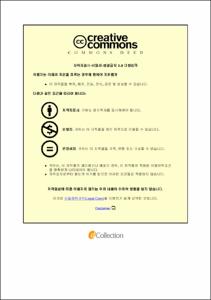동사 get의 다의적 의미연구
- Abstract
- This study has performed the process of checking the utilization frequency of the meaning of words with multiple meanings through English textbooks and the English section of the Korean Scholastic Aptitude Test in order to verify whether get, typically a frequently used verb with multiple meanings, is properly educated at the high school seniors’ learning sites. In order to achieve the research purpose, this study has distinguished six meanings of the word ‘get’ according to a study conducted by Han Mi-jung(2013): (a) receive, acquire, and obtain, (b) move, go, and arrive, (c) have and possess, (d) become something, (e) let it be something and understand, and (f) other various meanings(argotic and colloquial expressions) and then referred to the study of Han Mi-jung(2013), and the current English education curriculum of high school seniors to divide the six meanings according to the learning functions. As a result of analyzing the appearance frequency of get’s six meanings in English textbooks Ⅰ and Ⅱ and the English section of the Korean Scholastic Aptitude Test, the frequency of get in English textbook Ⅰ was identified as d>a>b>e>c>f in the order. In addition, a similar pattern was observed in English textbook Ⅱ, which was identified as d>a>b>c>f>e. Finally, as a result of analyzing the English section of the Korean Scholastic Aptitude Test, it showed the frequency of d>b>a>c>f>e in the order, reflecting the patterns in those English textbooks, and the number of times the most useful meaning of get in practical conversation(f) appeared was only 5%. This study has suggested that the Korean formal curriculum follows a highly biased learning strategy for the Korean Scholastic Aptitude Test and school records in the case of frequently used words with multiple meanings, indicating the need to learn the meaning of words frequently used in practical conversation. In order to resolve the real problem, this study has suggested that learning strategies currently used by English textbooks and the English section of the Korean Scholastic Aptitude Test for learning get’s literary meanings should be reflected in the same way in learning the meaning of get in practical conversation.
Key Words: Word Learning, Get Which Is a Frequently Used Verb with Multiple Meanings, Utilization Frequency of Get Which Is a Frequently Used Verb with Multiple Meanings, and Balance with the Current Learning of Words’ Meanings in a Literary Aspect.
- Issued Date
- 2020
- Awarded Date
- 2020. 2
- Type
- Dissertation
- Publisher
- 부경대학교
- Affiliation
- 부경대학교 교육대학원
- Department
- 교육대학원 영어교육전공
- Advisor
- 김은일
- Table Of Contents
- I.서론 1
1.1.연구의 필요성 및 목적 1
1.2.연구방법 3
II.이론적 배경 5
2.1.영어 교과서와 대학수학능력시험 5
2.1.1.영어 교과서 분석의 필요성 5
2.1.2.대학수학능력시험 영어영역 분석의 필요성 9
2.1.3.고등영어 교과서와 수능 간의 연관성 11
2.2.동사 get의 중요성과 다의성 13
2.2.1.탈 어휘 동사의 정의 및 특성 13
2.2.2.고빈도 어휘 get의 학습 중요성 15
2.2.3.동사 get의 다의적 의미 17
III.영어 교과서와 대학수학능력시험의 get 활용 현황 23
3.1.영어 교과서 Ⅰ 23
3.1.1.능률 출판사(이) 23
3.1.2.YBM(신) 29
3.1.3.금성(김) 32
3.1.4.동아(윤) 35
3.1.5.미래엔(양) 41
3.1.6.비상(홍) 46
3.1.7.천재(김) 50
3.1.8.천재(이) 53
3.2.영어 교과서 Ⅱ의 get 활용 현황 61
3.2.1.능률 출판사(이) 61
3.2.2.YBM(신) 67
3.2.3.금성(김) 70
3.2.4.동아(윤) 74
3.2.5.미래엔(양) 79
3.2.6.비상(홍) 83
3.2.7.천재(김) 88
3.2.8.천재(이) 92
3.3.대학수학능력시험 영어영역의 get 활용 현황 101
3.3.1.대학수학능력시험 영어영역 역대 기출문제 101
IV.결론 117
4.1.연구의 요약 및 시사점 117
4.2.연구의 한계 및 차후 연구 방향 120
참고문헌 121
- Degree
- Master
- Files in This Item:
-
-
Download
 동사 get의 다의적 의미연구.pdf
기타 데이터 / 912.5 kB / Adobe PDF
동사 get의 다의적 의미연구.pdf
기타 데이터 / 912.5 kB / Adobe PDF
-
Items in Repository are protected by copyright, with all rights reserved, unless otherwise indicated.